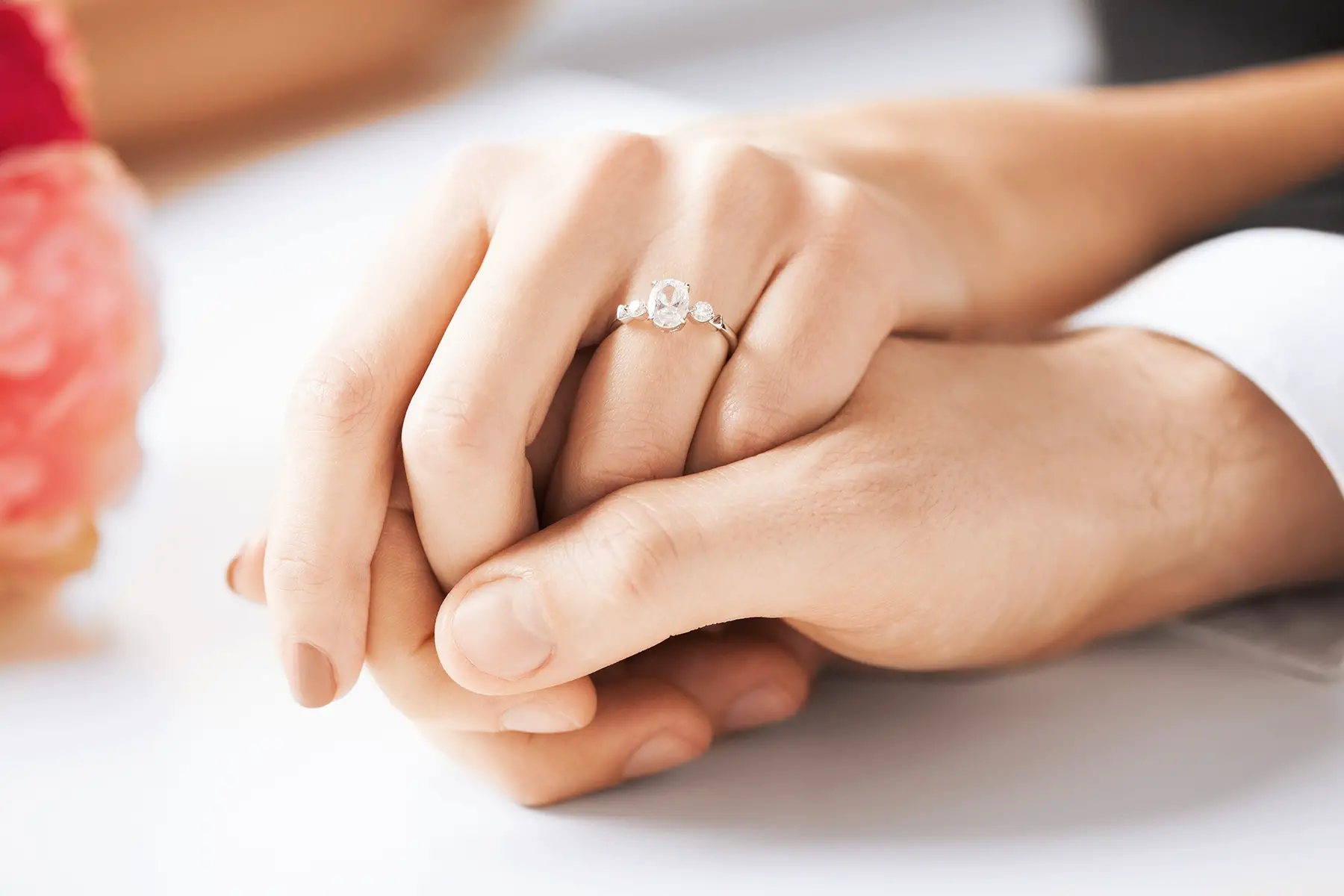Oh, Valentine’s Day: the annual day of hearts, roses, romance, chocolates, and maybe even wedding rings. At least, that’s what we’ve come to know of it. But how did this romantic holiday begin?
You may be surprised by the bloody and debauched origins of this age-old day of love. Here’s what you need to know:
Find love with Expatica Dating
Are you looking to meet single expats and potentially find ‘the one’? Finding love as an expat can be challenging, but that’s where an online dating site can help. Expatica Dating will help you meet eligible singles in your area and find the perfect match. Register for free today and begin your quest!
Who was Saint Valentine?
There is some confusion as to which Saint Valentine the holiday refers to. The Catholic Church actually has three saints named Valentine, and it is unclear which of the three is the Valentine that’s celebrated on this day.
The most popular option seems to be the Valentine who was a Roman priest. He secretly performed Christian-based marriages for soldiers and their lovers, even though it was prohibited. The priest was discovered and imprisoned in a torture-ridden Roman jail, where he fell in love with a mysterious girl (believed to be his prosecutor’s daughter). Just before his execution, Valentine sent her a love letter signed ‘from your Valentine’, thus originating the romantic sign-off still widely used today.
Of course, this is just a legend, and many are unsure of its factual truth. However, it portrays Saint Valentine as a romantic hero, perhaps explaining why his name day has grown in popularity over time.
Valentine’s Day: Christian or Pagan?
The exact date of Saint Valentine’s death is lost to history. So why do we celebrate Valentine’s Day on 14 February?
Some historians believe the date could be Christianity’s attempt to replace the ancient Pagan celebration of Lupercalia, a fertility festival for the pagan agricultural god Faunus.

This event, which traditionally took place on 15 February, was the OG key party that we know from the 1970s. Roman men allegedly drew the names of women from a jar to be coupled with during the festival. The story alleges that this often led to true love, and not just for one night.
Lupercalia became officially outlawed when Pope Gelasius replaced it with Valentine’s Day in 496 CE.
Why does Valentine’s Day celebrate romance?
Whether it commemorates Saint Valentine’s bloody execution or swinger parties of the Roman elite, modern society treats 14 February as a day of love. However, up to this point, Valentine’s Day had no official romantic connotations – other than a love-struck priest and sexual encounters with strangers.
The holiday became associated with romance in the late Middle Ages, when widespread belief held that birds found their mates in mid-February. For example, France would celebrate romantic love during the annual holiday.
Valentine’s Day was further romanticized by poets like Geoffrey Chaucer (c. 1343–1400) and William Shakespeare (1564–1616), who wrote about love birds and meeting your true love.
The first Valentine’s Day greeting cards
The 1400s was also when Valentine’s Day cards first came into being. The first valentine is thought to have come from the Duke of Orléans, who sent a message to his wife from English prison. King Henry V soon joined the trend by hiring a writer to send a message to Catherine of Valois.
As Valentine’s Day gained more popularity in the 1600s and 1700s, hand-written greetings and small gifts became more common. The first commercial cards appeared in England at the end of the 18th century. These valentines were engraved or carved from wood, printed, and sometimes colored by hand.
From then on, mass-produced modern printing largely replaced the hand-made Valentine’s Day cards.
What’s Cupid’s role in all of this?
Of course, you can’t have a day of love without mentioning the God of Love and Lust. Although many know Cupid as a chubby little angel who shoots love arrows, he didn’t always look this way.

According to Greco-Roman mythology, Cupid was a handsome young man known for manipulating gods and mortals and toying with their emotions. His golden arrows wreaked much havoc – especially when it involved Zeus and pretty mortals.
Cupid himself also had a tragic love story. According to the myth of Cupid and Psyche, Psyche was the most beautiful woman in the land, angering Venus. The goddess then instructs her son, Cupid, to kill the mortal, but (as tragedies go) he falls in love with her instead.
Meanwhile, despite her beauty, Psyche can’t find a husband. Apollo sets her up with Cupid, though this is unbeknownst to her. They marry and live together, only meeting up in the dark. One day, her sisters convince her to see who her husband is; she switches on the light and discovers it’s Cupid. He gets angry (because you can’t love without trust) and deserts her.
The myth goes on and on, and Psyche faces many trials and tribulations. In the end, she reunites with her husband and becomes an immortal goddess.
Which countries celebrate Valentine’s Day?
Many countries around the world celebrate Valentine’s Day with common traditions like cards, flowers, chocolates, and fancy dates. However, some have a unique spin on how to celebrate the Day of Love.

Here are some highlights:
Valentine’s Day in Belgium
The Belgians aren’t known for being especially romantic or festive on V-Day itself. But, as the chocolate capital of Europe, it’s no surprise chocolate features highly on the gift list, even when purchased at the last minute.
- How to say ‘I love you’ in Belgium: Ik mag u graag (Dutch) or Je t’aime (French)
- How to say ‘Happy Valentine’s Day’ in Belgian: Fijne valentijnsdag
Valentine’s Day in Germany
Germans only started celebrating Valentinstag shortly after the Second World War when American soldiers introduced the concept. New as it is, Valentine’s Day cards aren’t popular in Germany. Instead, couples prefer more elaborate love declarations.

A common tradition is to give a heart-shaped gingerbread cookie, complete with an affectionate icing message. It’s fastened with a long ribbon so it can be worn before being eaten.
- How to say ‘I love you’ in German: Ich liebe Dich
- How to say ‘Happy Valentine’s Day’ in German: Alles gute zum Valentinstag, Schönen Valentinstag, or Happy Valentinstag
Valentine’s Day in Guatemala
V-Day in Guatemala is much less romantic. Instead, Guatemalans celebrate the Día del Cariño (Affection Day) by giving anonymous gifts to friends. In Guatemala City, residents wear bright colors and traditional Maya garb and hold a parade for senior citizens.
- How to say ‘I love you’ in Guatemala: Te amo or Te quiero
- How to say ‘Happy Valentine’s Day’ in Italian: Feliz Día del Cariño
Valentine’s Day in Italy
Italy is known for its passion, so, of course, the country celebrates V-Day in a special way. Couples give each other gifts like the baci perugina, a small box of hazelnut-filled chocolate bonbons. Each “kiss” has a small love note inside, written in five different languages.
An older tradition says that the first man that a single woman sees on Valentine’s Day will become her husband within the year.
- How to say ‘I love you’ in Italian: Ti amo
- How to say ‘Happy Valentine’s Day’ in Italian: Buon San Valentino
Valentine’s Day in Japan
Japan strays away from traditional gender norms. On Valentine’s Day, women first give chocolates to the men. Much thought goes into whether it should be giri chocolate (for friends and acquaintances) or honmei chocolate (for your true love).

Men will reciprocate with white chocolate or other tokens exactly one month later, on White Day.
- How to say ‘I love you’ in Japanese: Daisuki da yo
- How to say ‘Happy Valentine’s Day’ in Japanese: Happī barentain dē
Valentine’s Day in the Philippines
Perhaps the most love-filled tradition occurs in the Philippines, where Valentine’s Day is celebrated with mass weddings. On this day, Filipino couples can get married for free, thanks to the government. They will even get gold-plated rings, flowers, wedding gifts, and food. In some parts of the country, newlyweds also have the chance to win funds for their honeymoon.
In 2009, Caloocan City had a record number of 2,664 couples marrying on the holiday.
- How to say ‘I love you’ in the Philippines: Mahal kita
- How to say ‘Happy Valentine’s Day’ in Filipino: Maligayang araw ng mga Puso
Valentine’s Day in Portugal
While the Portuguese celebrate V-Day similar to many other countries, they have one unique tradition. It’s customary for women to get a gift basket of gourmet treats and for men to get a basket of their favorite liqueurs.
- How to say ‘I love you’ in Portuguese: Eu te amo or eu te quero
- How to say ‘Happy Valentine’s Day’ in Portuguese: Feliz Dia dos Namorados
Valentine’s Day in South Africa
In South African culture, women aren’t shy on V-Day. Rather, they pin the name of their crush on their shirt for all to see. Hopefully, their crush sees it too and will respond the same way.
- How to say ‘I love you’ in Zulu: Ngiyakuthanda
- How to say ‘Happy Valentine’s Day’ in Zulu: usuku oluhle lwe-Valentines
Valentine’s Day in Spain
Although Spain celebrates V-Day the same as elsewhere, they also have local festivals with similar themes. For example, Valencia celebrates Saint Dionysius Day (the Spanish patron saint of love) on 9 October by hosting festive parades and gifting women with traditional Mocadora marzipan figurines.
In Catalonia, locals celebrate Saint George Day, also known as El Día de la Rosa or El Día de la Libre (the day of the rose or book), on 23 April by gifting roses and books.

In light of the commercialism surrounding these holidays, some people jokingly call the holiday Día de El Corte Inglés, after a popular Spanish department store.
- How to say ‘I love you’ in Spanish: Te amo or te quiero
- How to say ‘Happy Valentine’s Day’ in Spanish: Feliz Dia de San Valentin
Valentine’s Day in Thailand
Love is always a risk. Aside from the regular V-Day traditions, adventurous couples in Thailand celebrate the day by skydiving, bungee jumping, or having an underwater wedding.
- How to say ‘I love you’ in Thai: Chan rak khun
- How to say ‘Happy Valentine’s Day’ in Thailand: Suk san wan waa layn tai
12 countries that don’t celebrate Valentine’s Day
There are also countries that don’t (widely) celebrate Valentine’s Day. Some believe that the Christian holiday goes against their own religion, whereas others consider it too much cultural influence from Europe and Northern America.

Here are 12 countries that don’t observe Valentine’s Day:
- Afghanistan
- Brunei
- India
- Indonesia
- Iran
- Malaysia
- Mauritania
- Pakistan
- Qatar
- Saudi Arabia
- Somalia
- Uzbekistan













